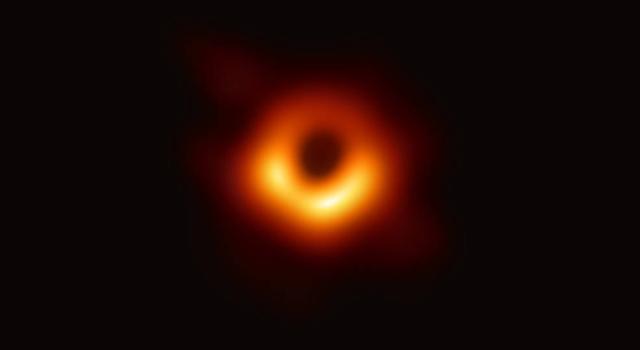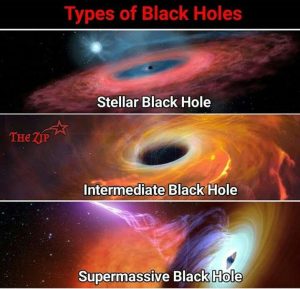Black Hole
About
- Black Holes are huge concentrations of matter packed into very tiny spaces.
- A black hole is so dense that gravity just beneath its surface- the event horizon, is strong enough that nothing, not even light can escape.
- The event horizon is a boundary that contains all the matter that makes up the black hole.
Finding Black Holes
-
- Black holes don’t emit or reflect light, making them effectively invisible to telescopes.
- Scientists primarily detect and study them based on how they affect their surroundings:
- Black holes can be surrounded by rings of gas and dust, called accretion disks, that emit light across many wavelengths, including X-rays. These disks are crucial for investigating black holes.
- A supermassive black hole’s intense gravity can cause stars to orbit around it in a particular way. Astronomers tracked the orbits of several stars near the centre of the Milky Way to prove it houses a supermassive black hole, a discovery that won the 2020 Nobel Prize.
- When very massive objects accelerate through space, they create ripples called gravitational waves. Scientists can detect some of these by the ripples’ effect on detectors.
- Massive objects like black holes can bend and distort light from more distant objects. This effect, called gravitational lensing, can be used to find isolated black holes that are otherwise invisible.
- The first image of a black hole was captured in 2019 by the Event Horizon Telescope (EHT) collaboration.

Types of Black Holes
Astronomers generally divide black holes into three categories according to their mass:
- Stellar-mass black holes:
-
-
- Stellar-mass black holes are born when extremely massive stars collapse and typically weigh between five and 10 times the mass of the Sun.
- Stellar-mass black holes can continue to gain mass through collisions with stars and other black holes.
-
- Supermassive black holes:
-
-
- Supermassive black holes are classified as having masses more than 100,000 times that of our sun.
- They can be found at the centre of most galaxies, including the Milky Way.
-
- Intermediate-mass black holes:
-
- Black holes can be super-big or super-small. The missing link is an intermediate-mass black hole, weighing roughly 100 to 1,000 times our Sun’s mass.
- Few such black holes have been found in other galaxies.

What’s in the news?
- Scientists observed a brightening at the heart of a galaxy that was apparently caused by a Supermassive Black Hole (SDSS1335+0728) awakening from dormancy. The researchers found a disk of diffuse material (accretion disk) around the SDSS1335+0728.
|
Active Galactic Nuclei (AGN)
|
- https://science.nasa.gov/universe/black-holes/
- https://science.nasa.gov/universe/black-holes/types/
- https://edition.cnn.com/2024/06/19/science/supermassive-black-hole-awakening-scn/index.html
- https://www.cfa.harvard.edu/news/black-hole-police-discover-dormant-black-hole-outside-milky-way-galaxy
- https://www.reuters.com/science/scientists-witness-dormant-supermassive-black-hole-roar-life-2024-06-18/
- https://esahubble.org/wordbank/active-galactic-nucleus/
Subscribe
Login
0 Comments

